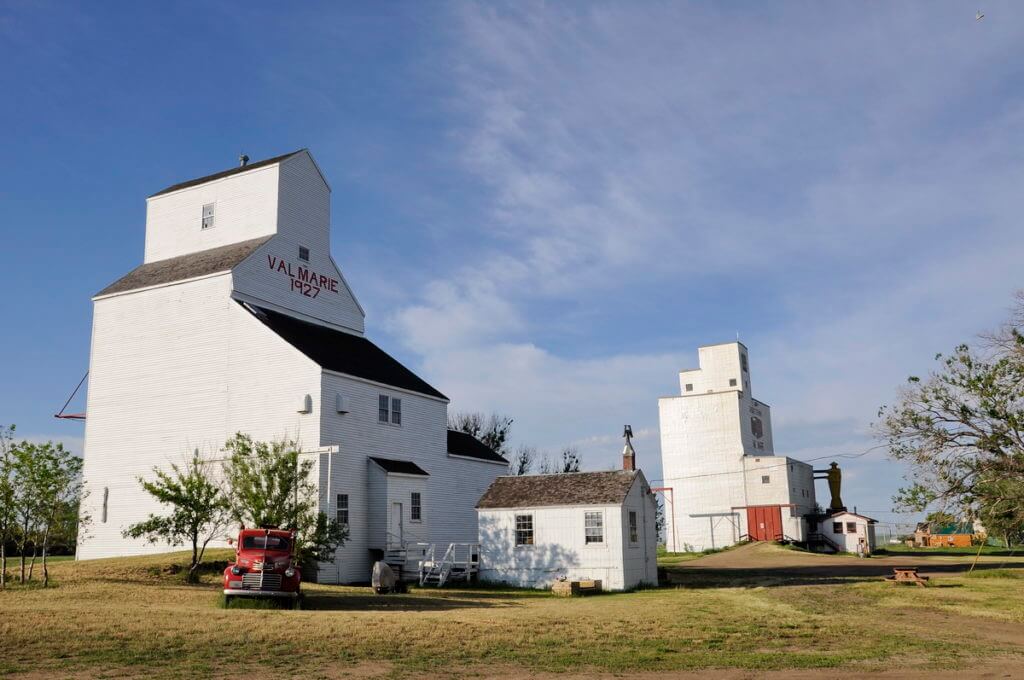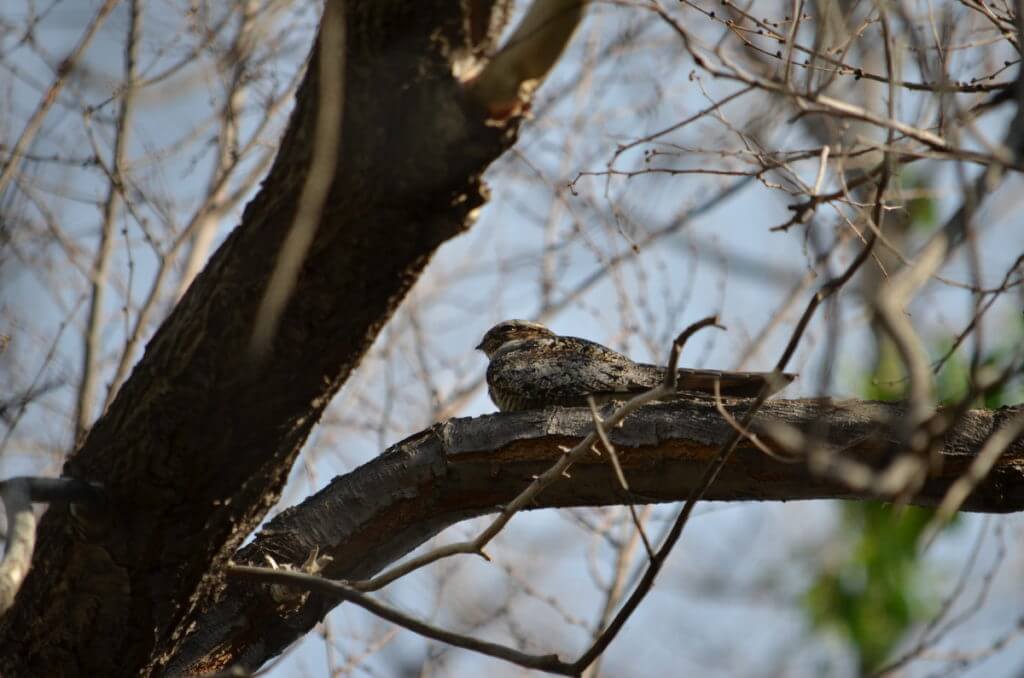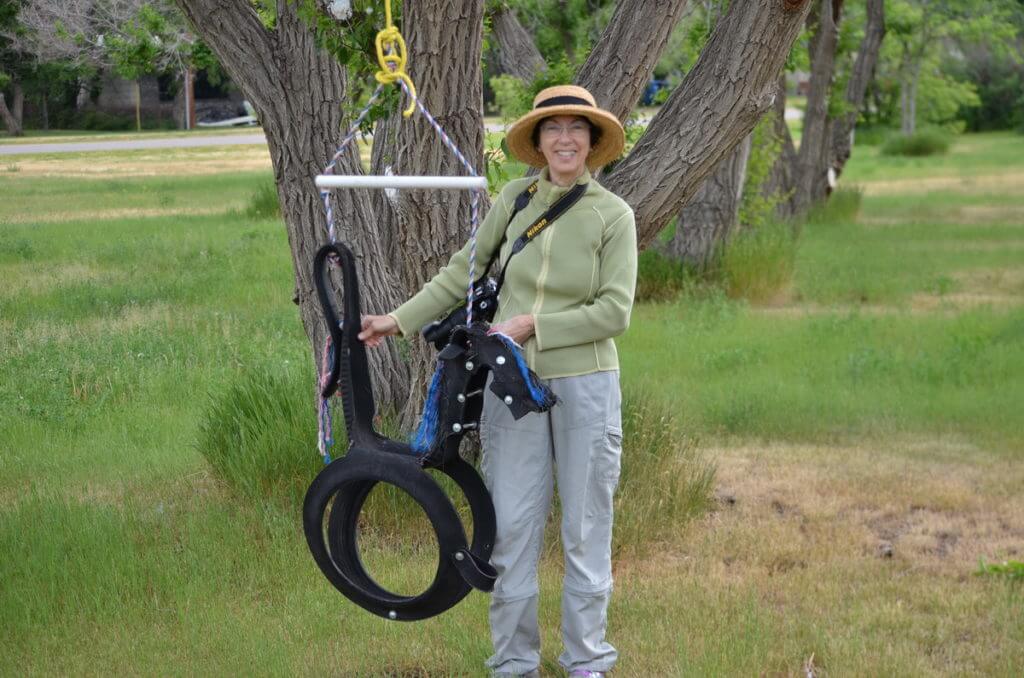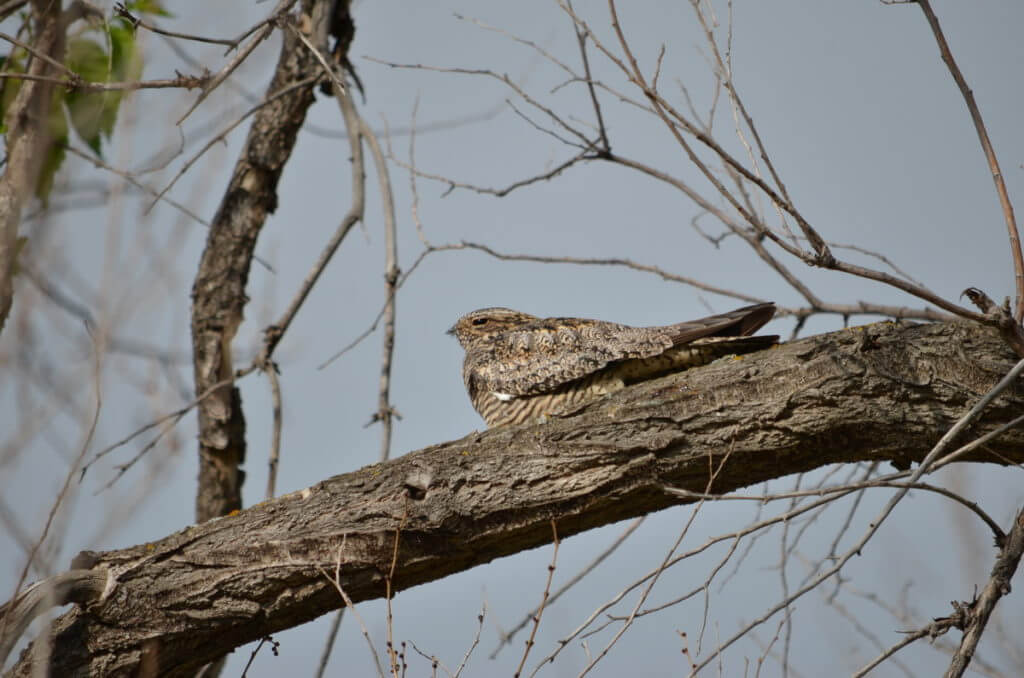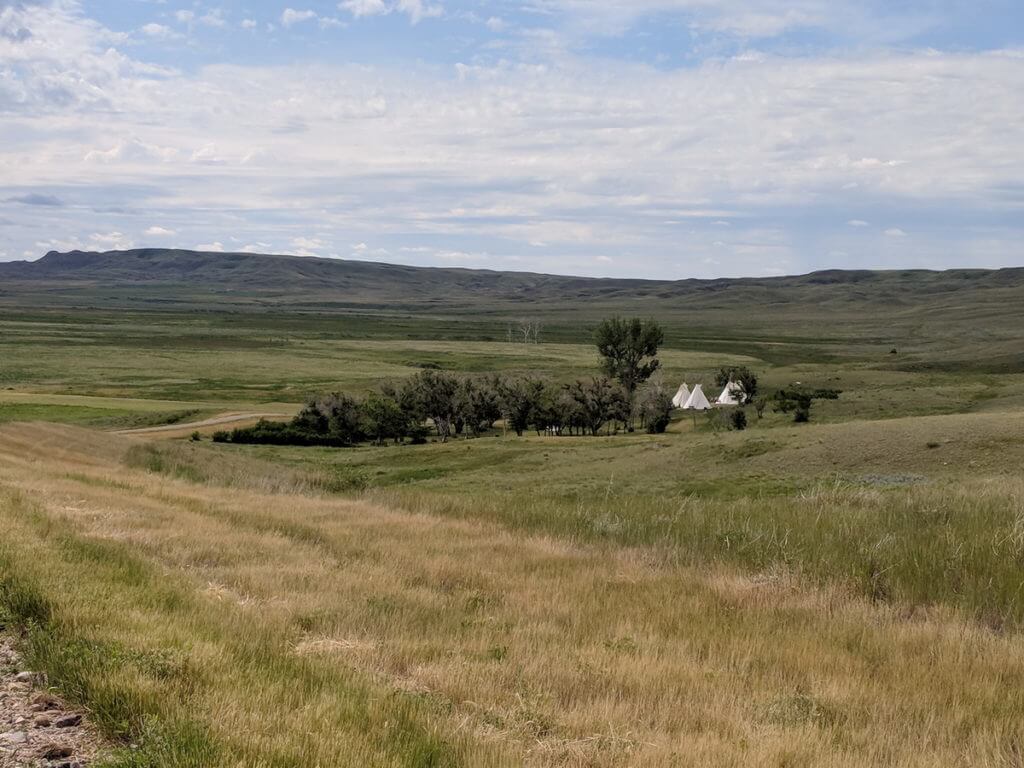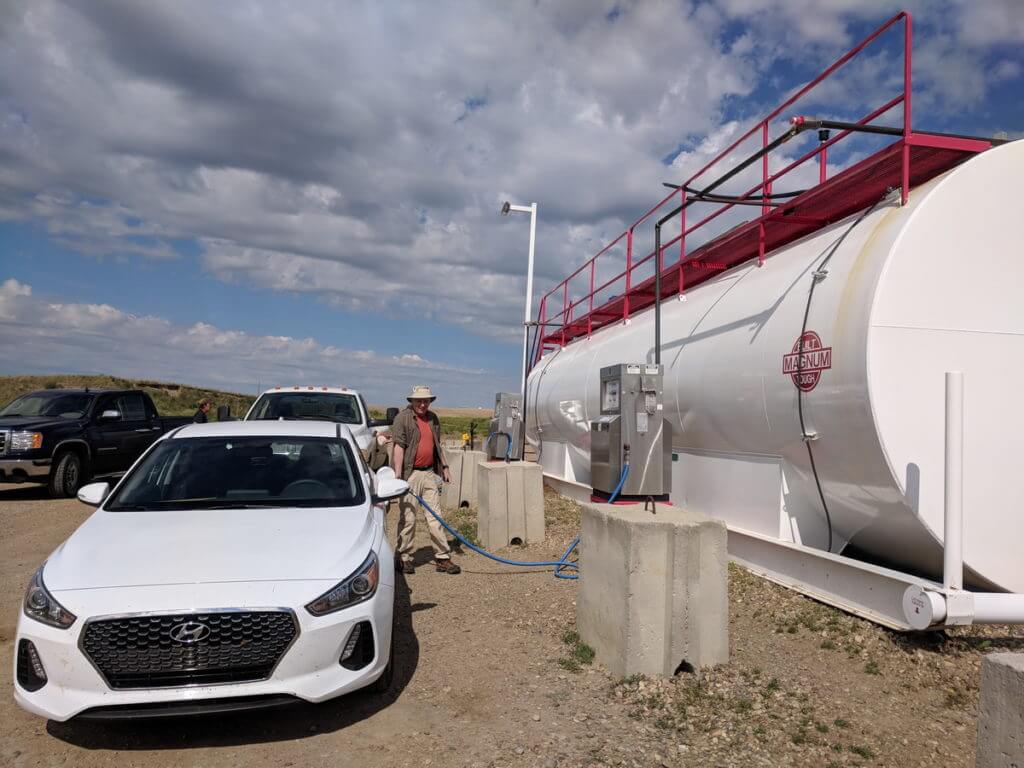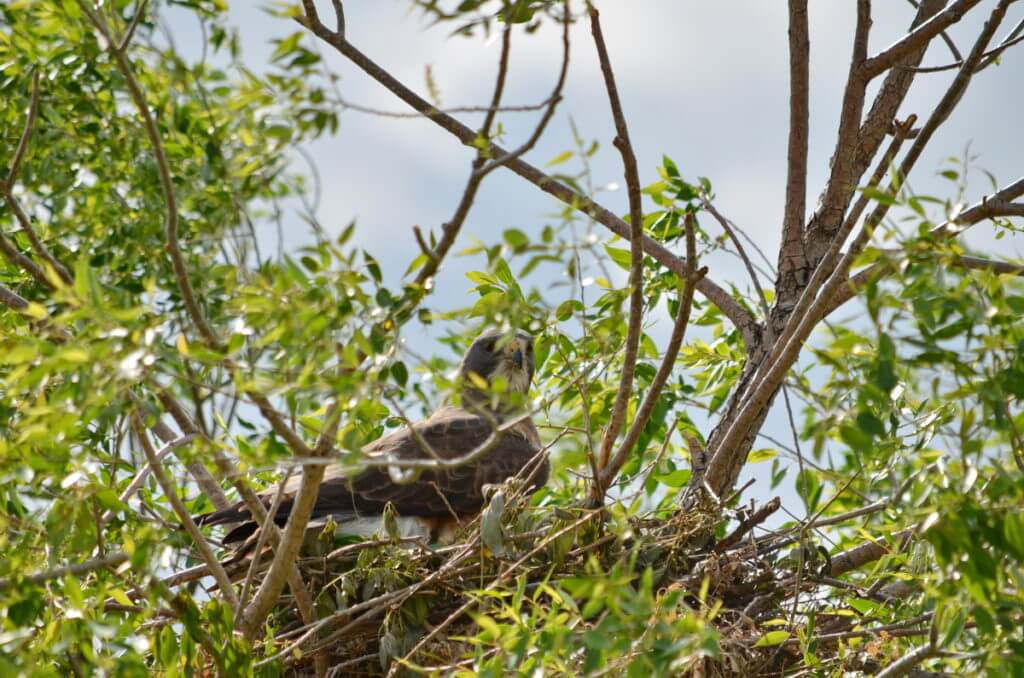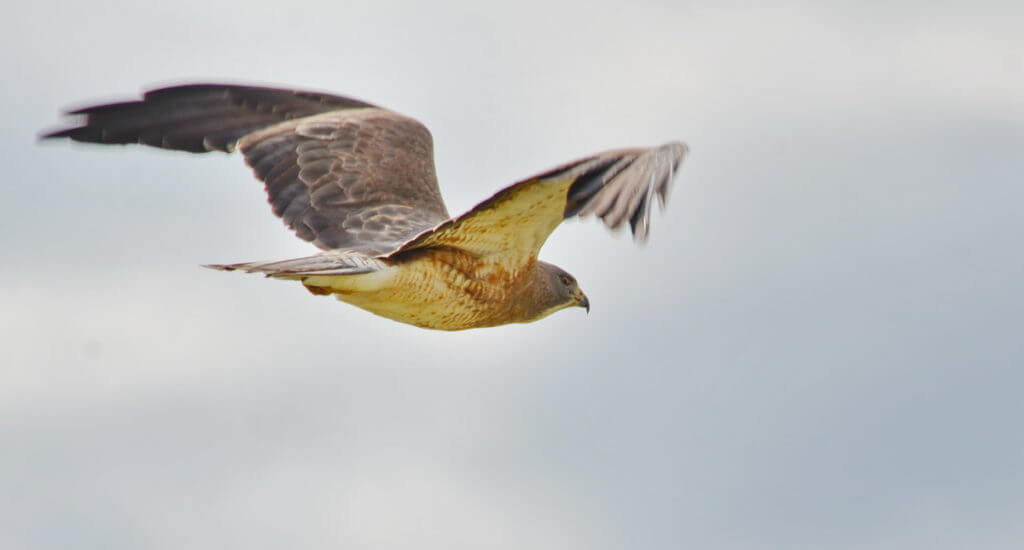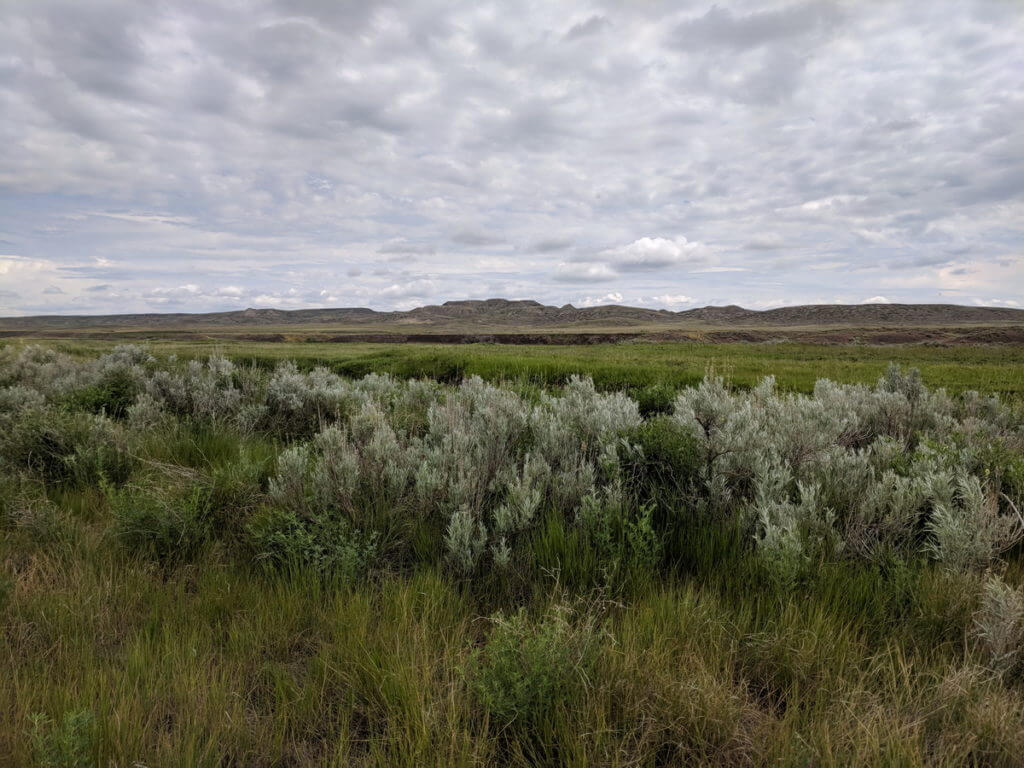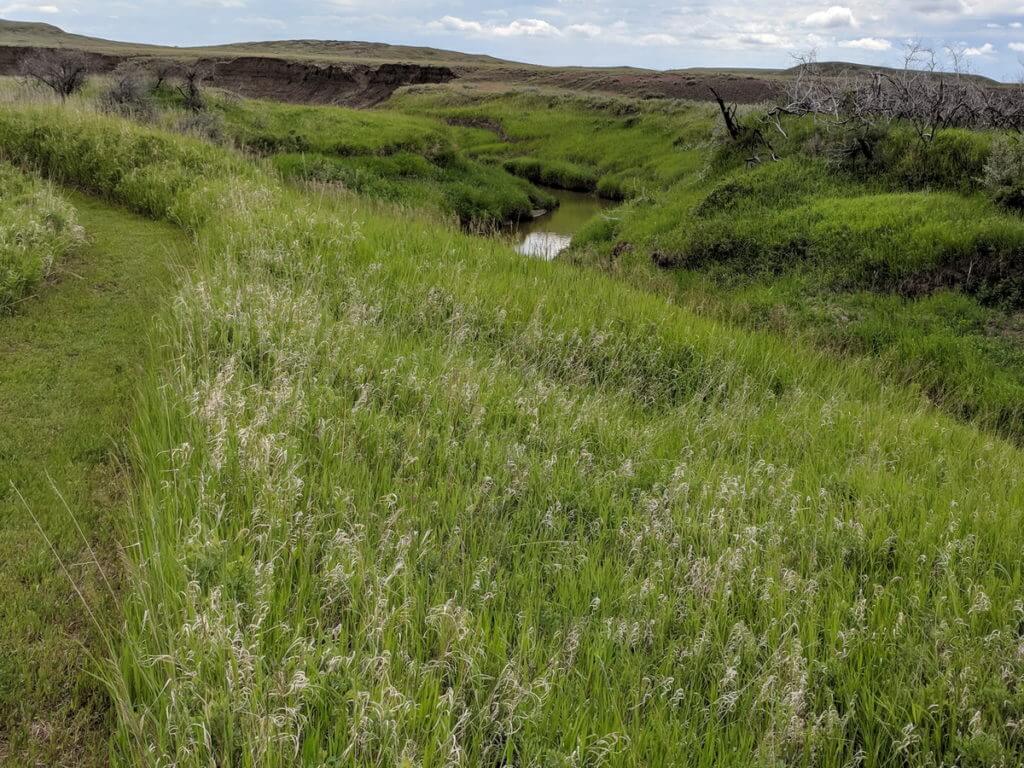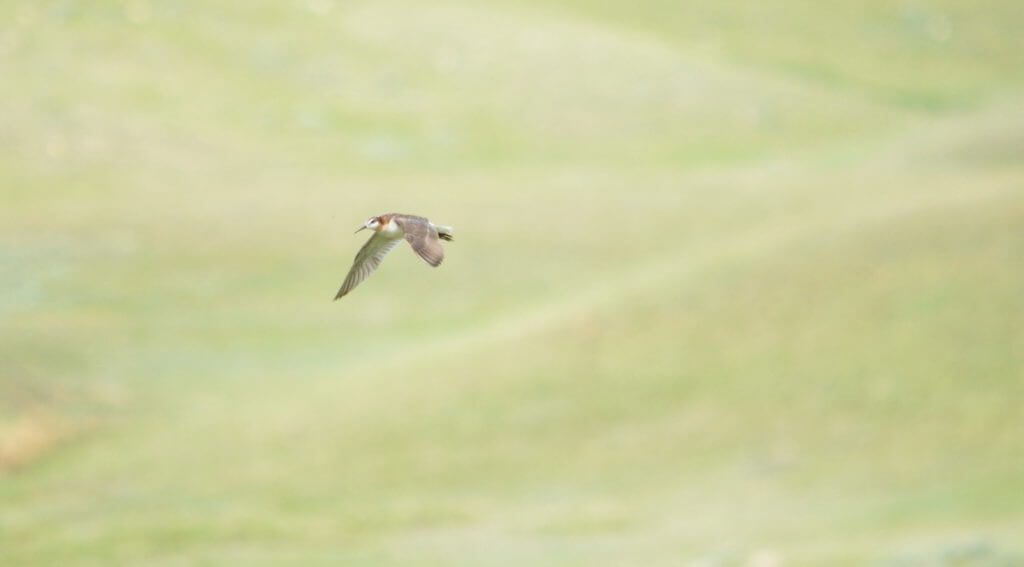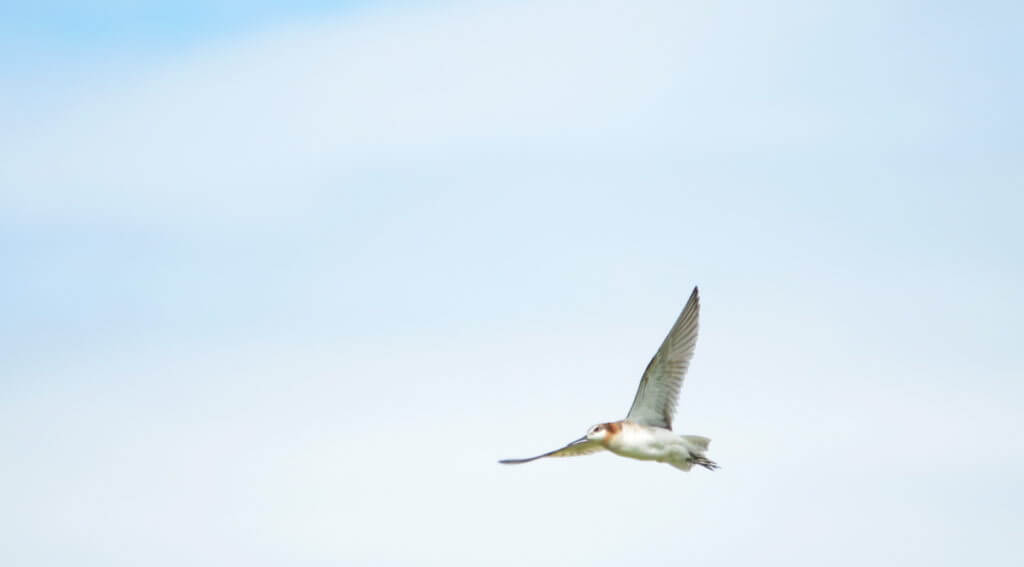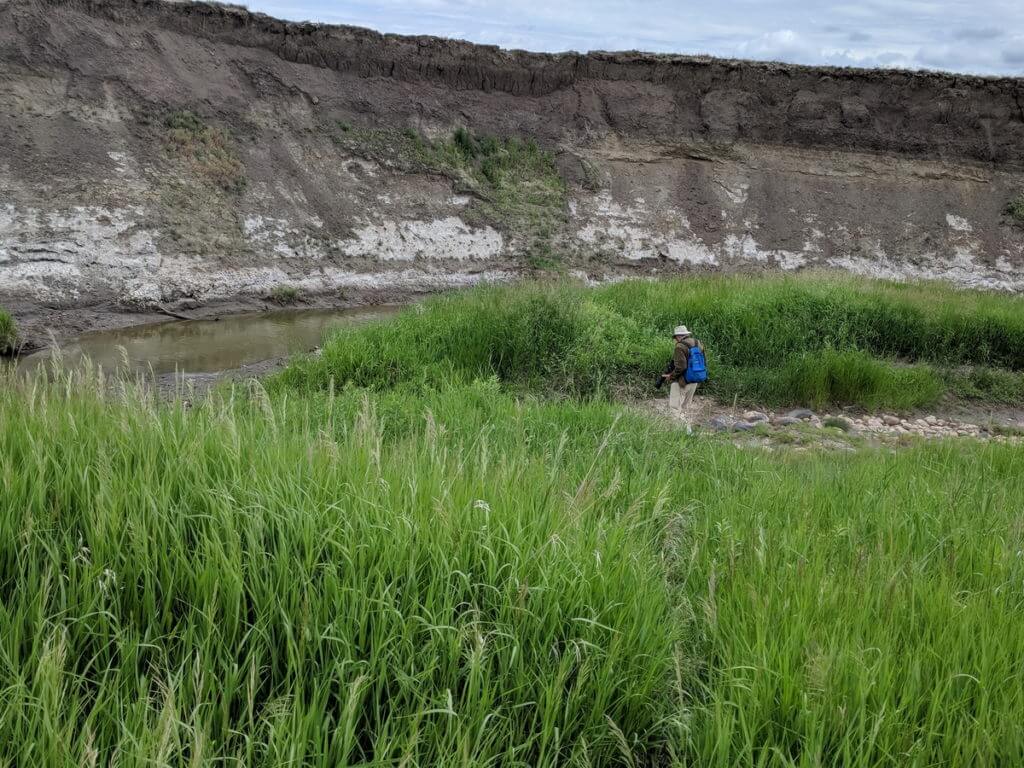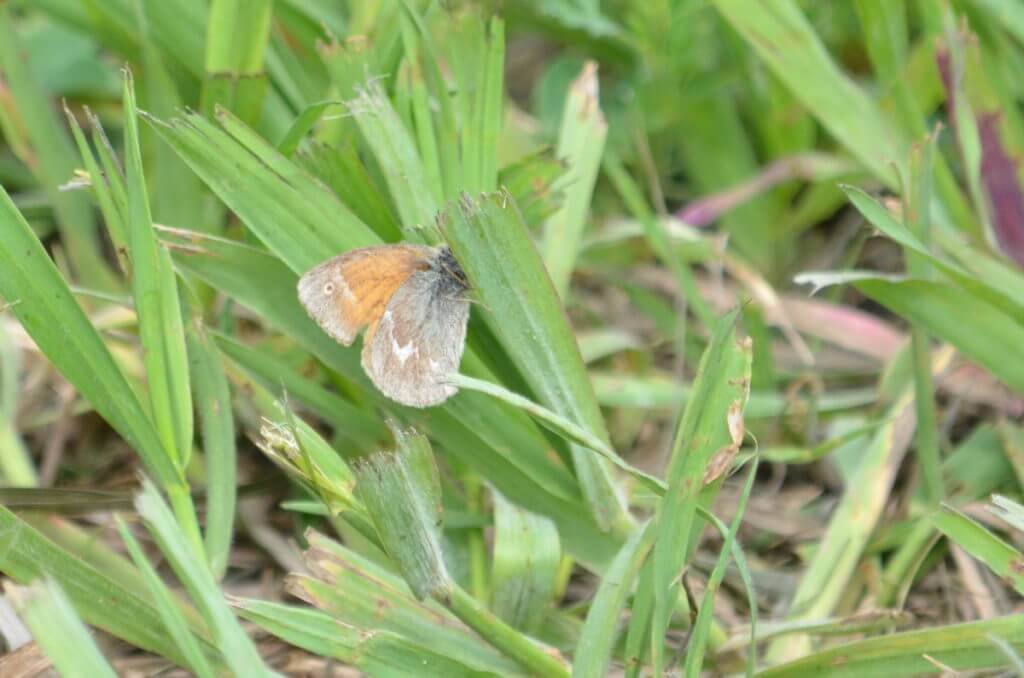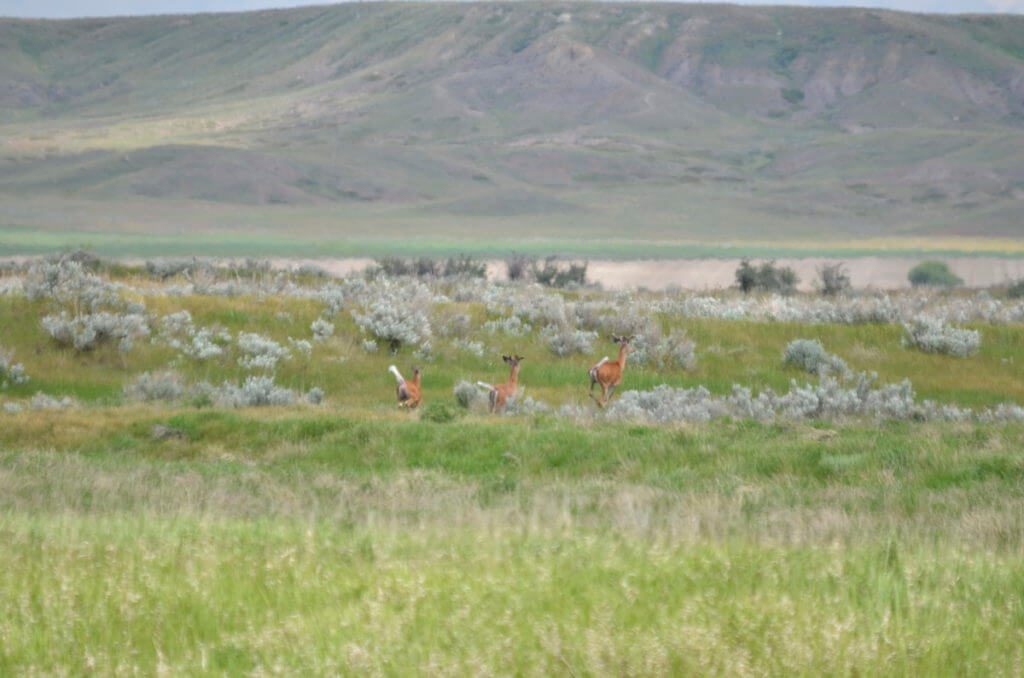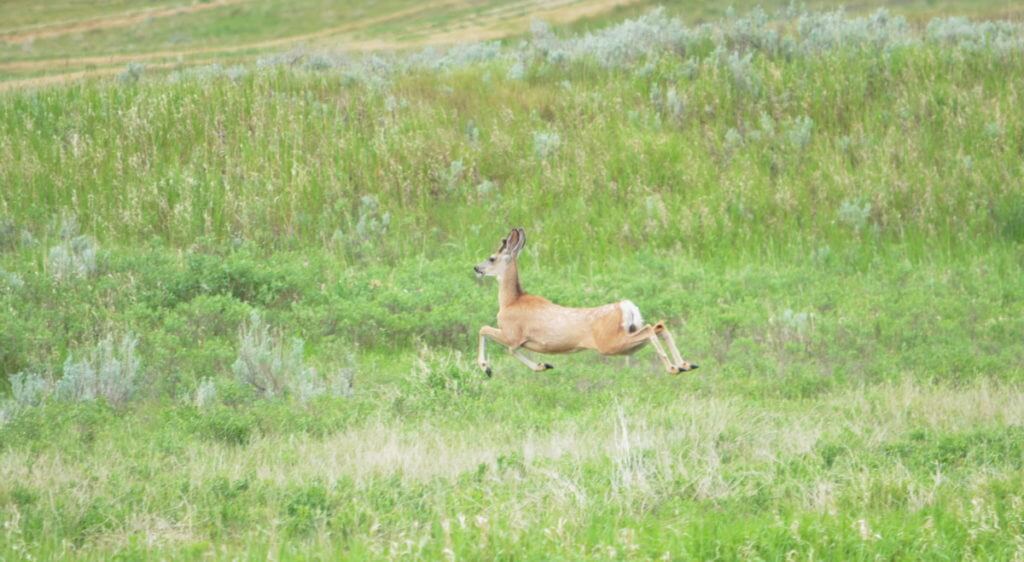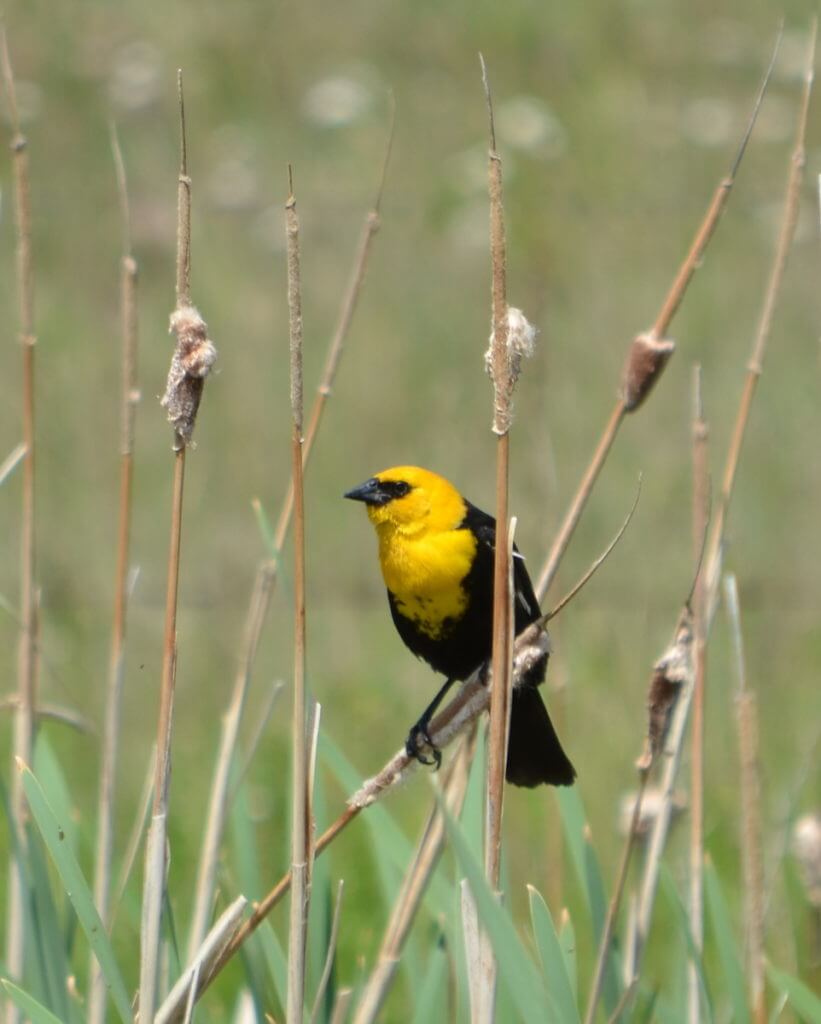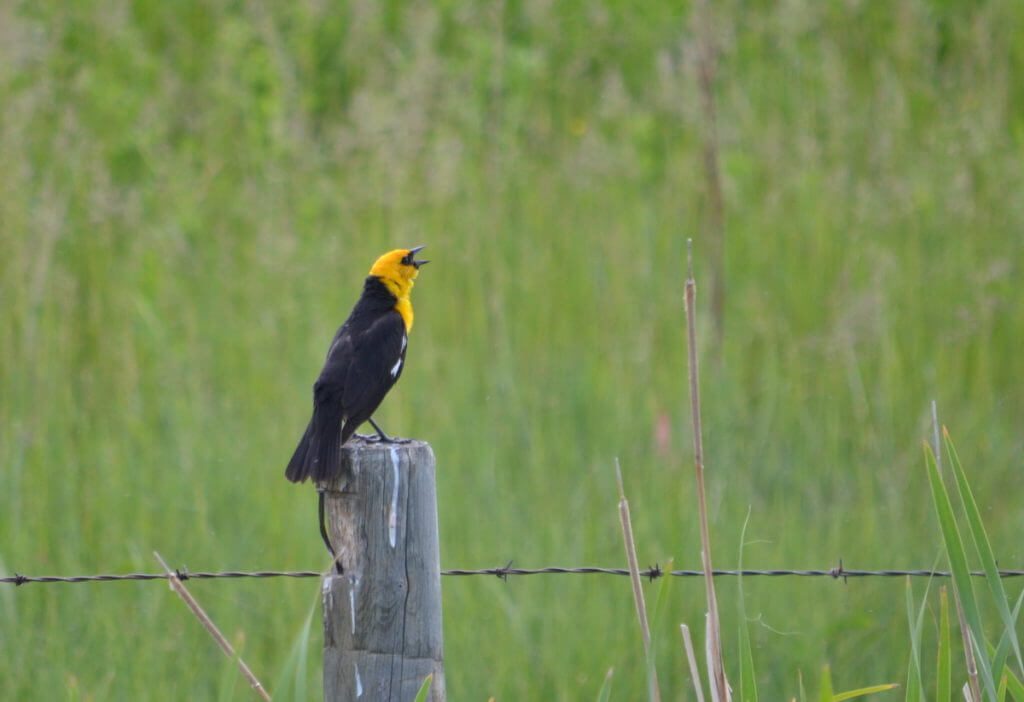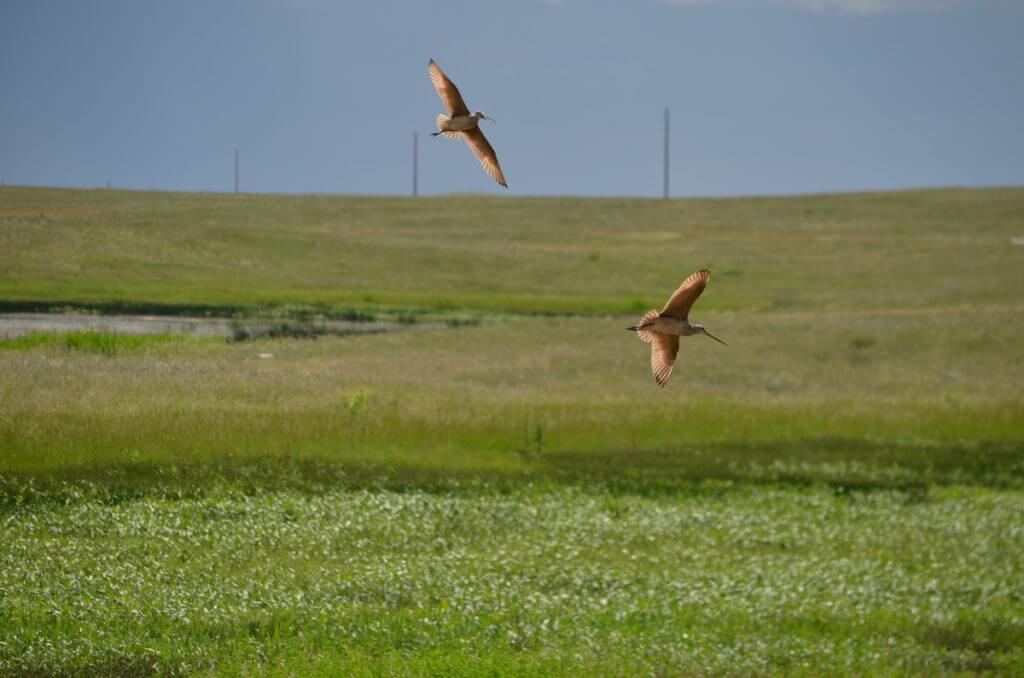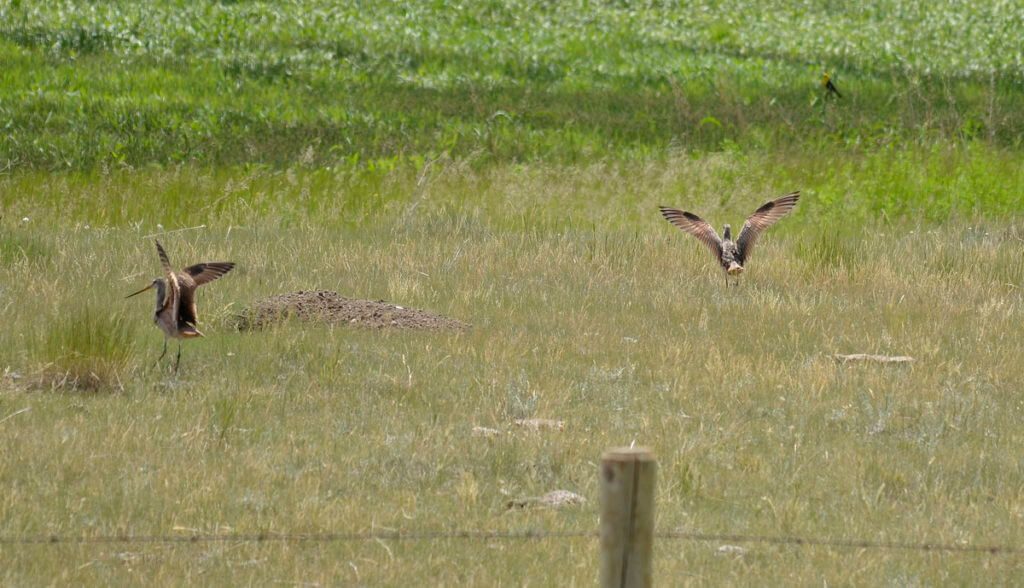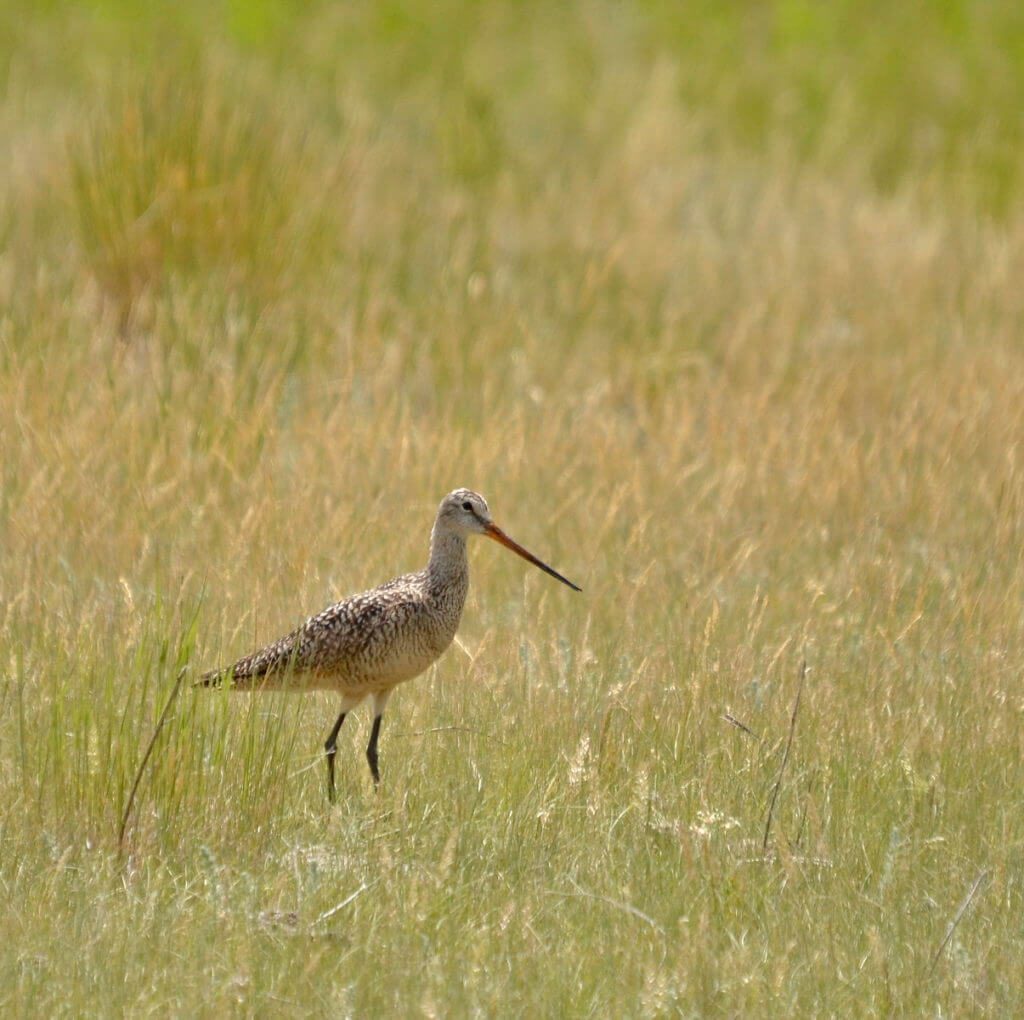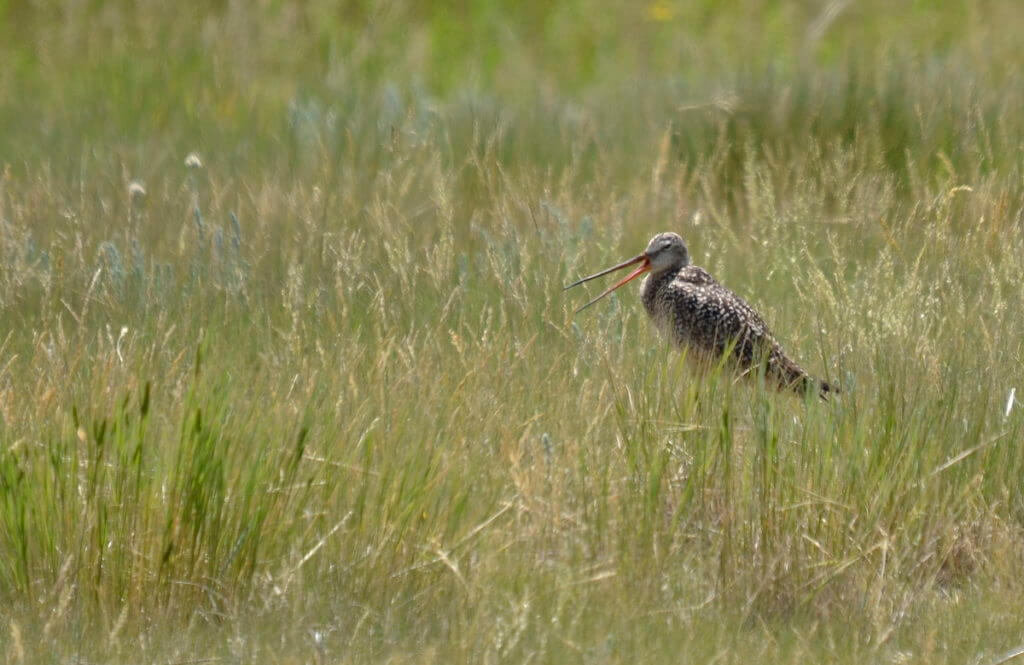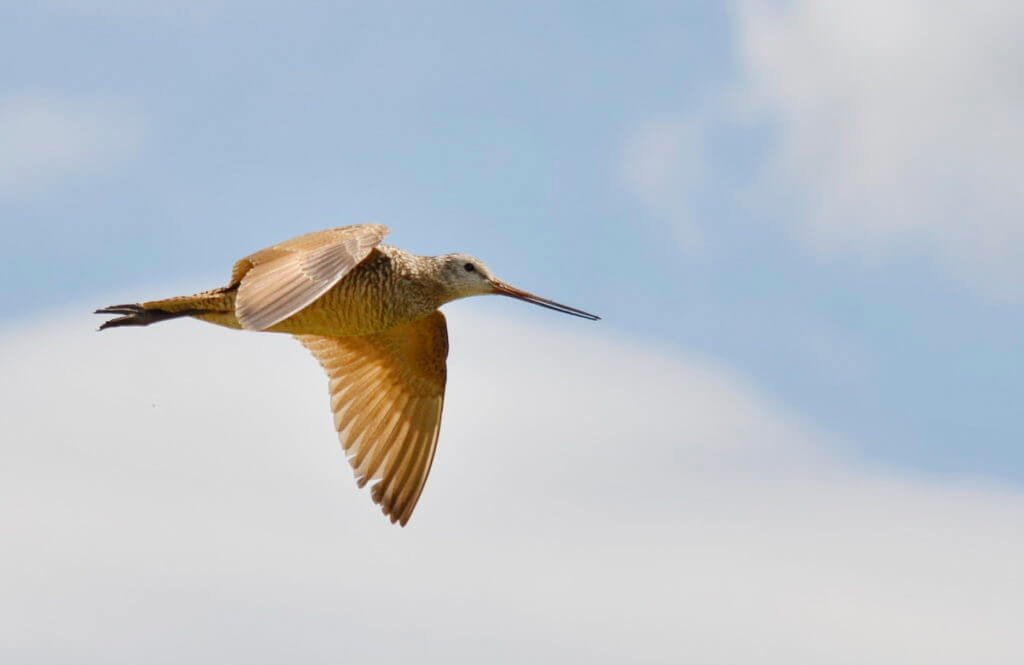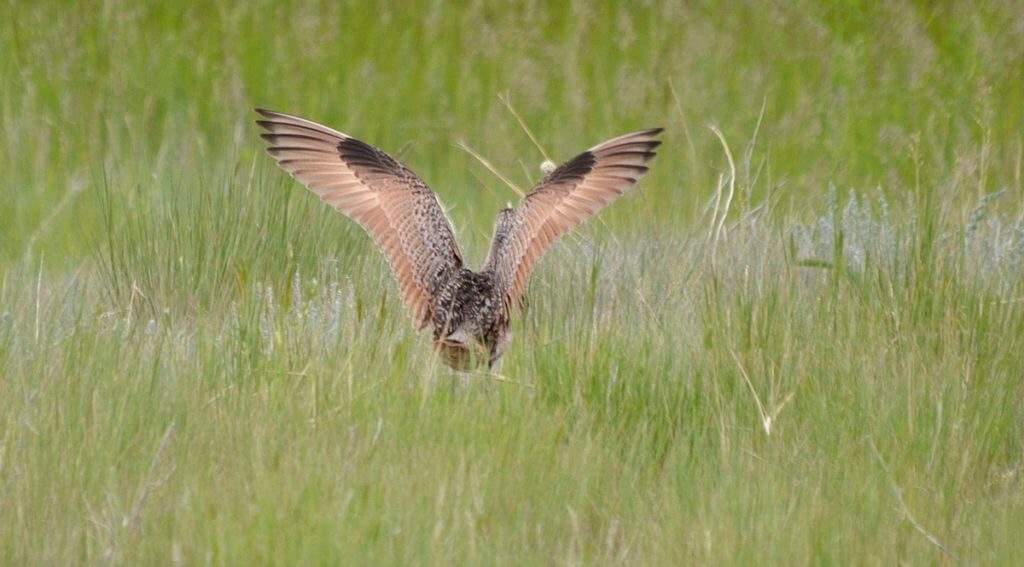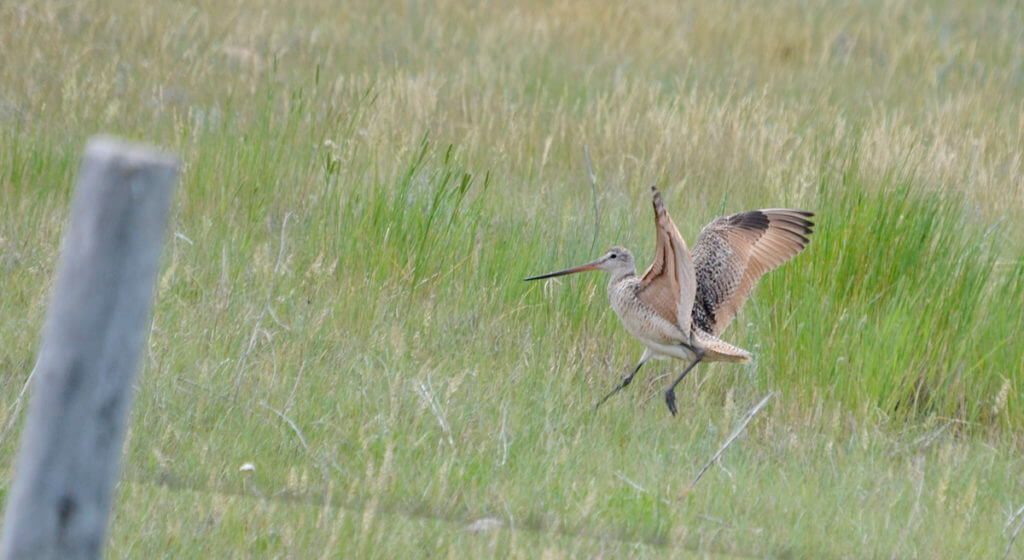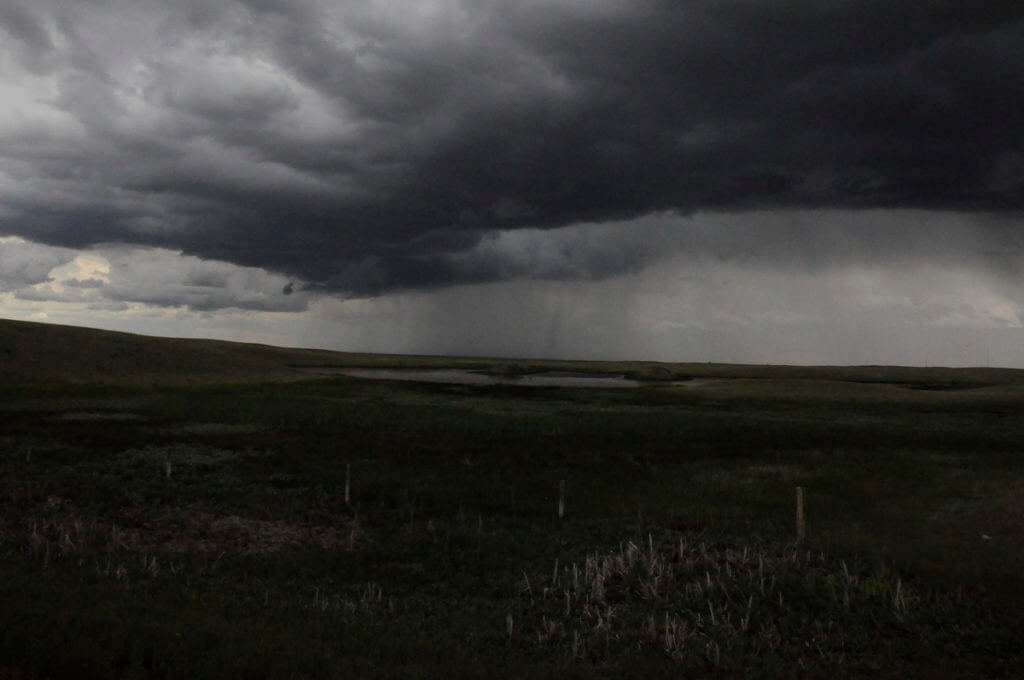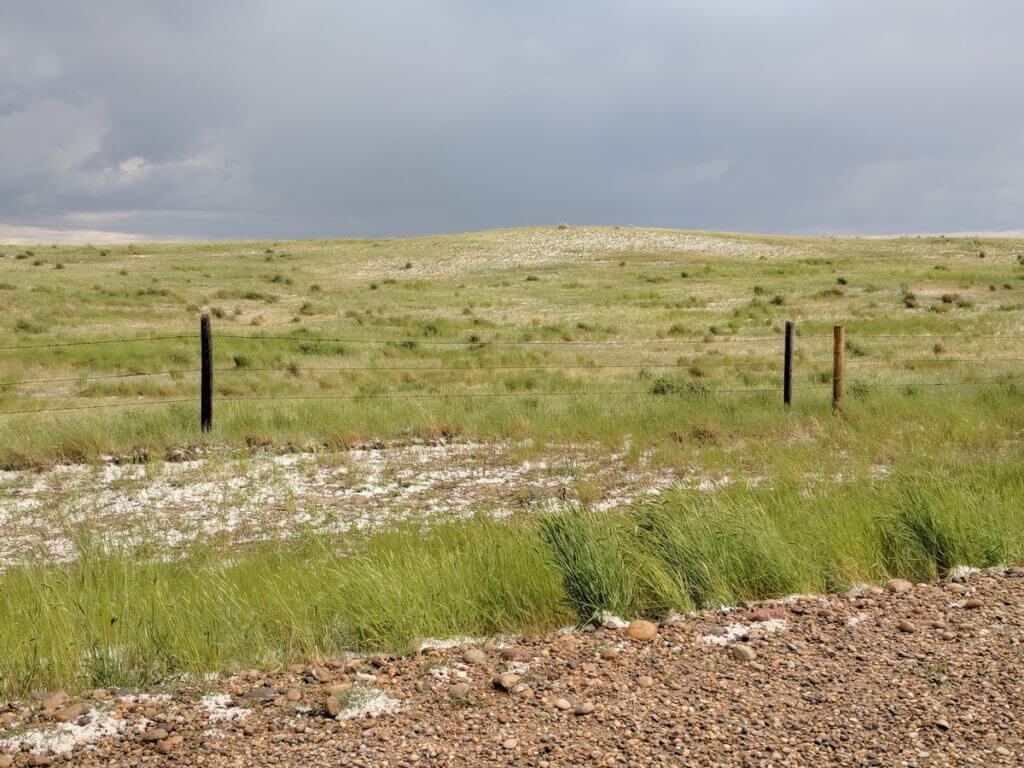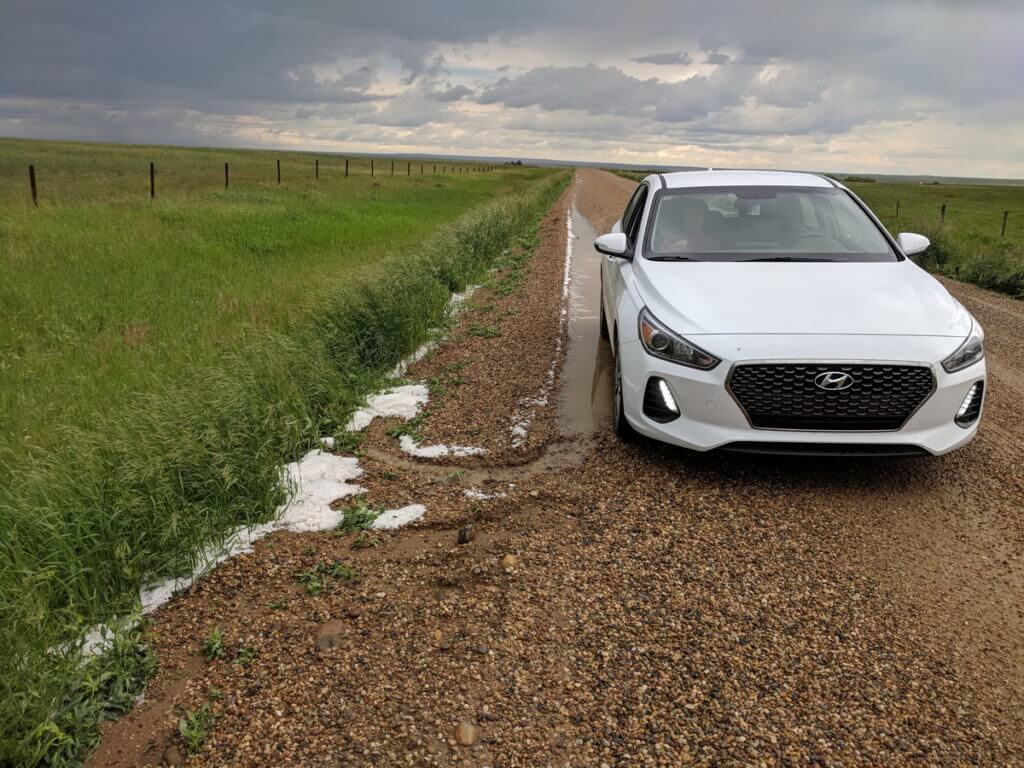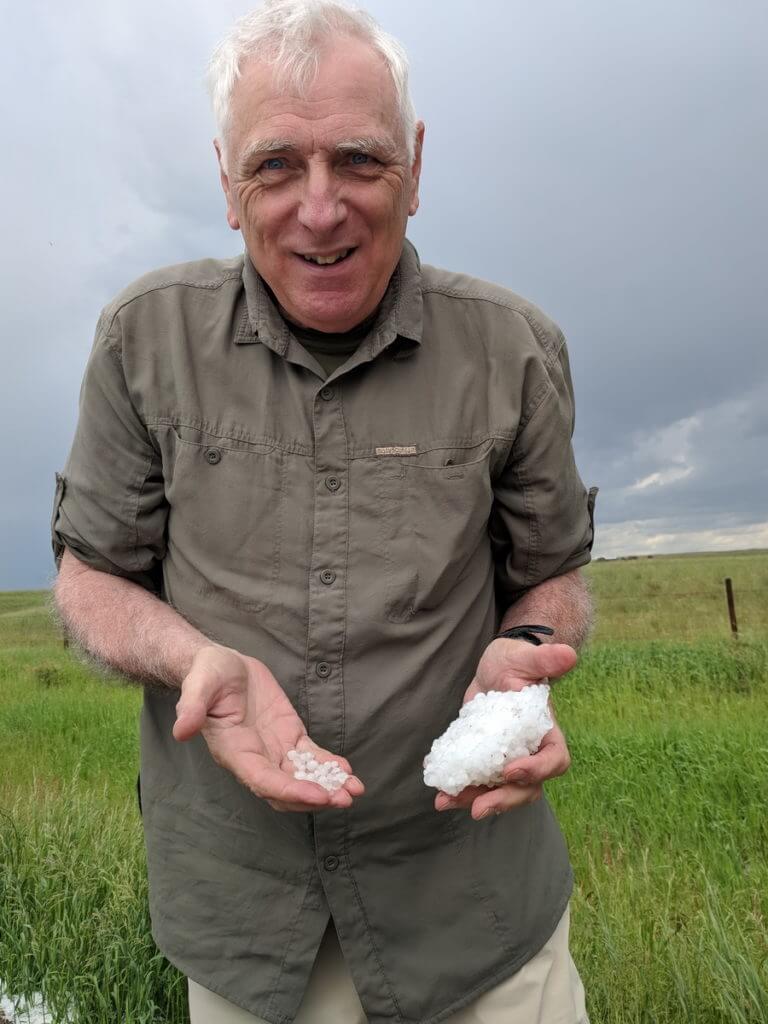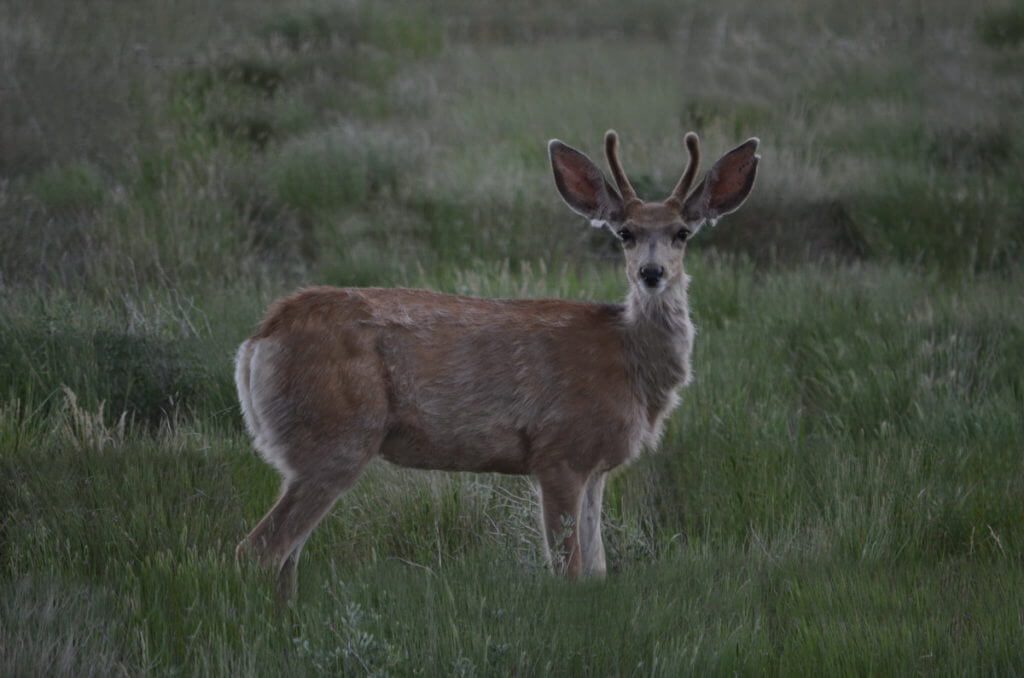Frame To Frame – Bob and Jean
Stormy Skies Over Grasslands National Park
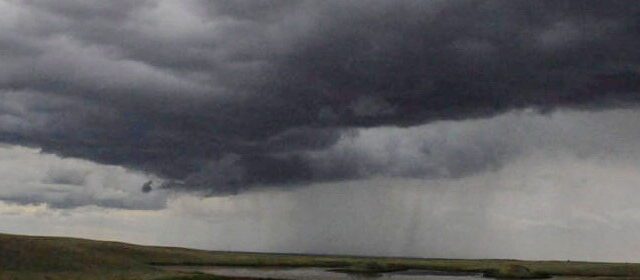
Waking up extra early in Val Marie had its advantages. Bob and I had time for a stroll around the village before it was time for breakfast. At the bottom of Centre Street, the Val Marie Elevator stood tall.
Val Marie, Saskatchewan, is a quaint little community whose economy is based on wheat farming, ranching and tourism. It is situated at the gateway to Grasslands National Park.
We could not believe our luck in finding a Common Nighthawk as we explored one interesting side street on our amble.
Wandering about, Bob and I were attracted to an open area when we spotted a novel and unique type of swing hung in a tree for the children.
When moseying back to our bed and breakfast along a shady back lane, what did we find but a second Common Nighthawk. We were off to a good start that day.
A consultation with Parks Canada employee Danielle at the Grasslands National Park Office in Val Marie inspired Bob and me to look for one of the park’s known resident snakes. Off we went to find the trailhead for the Two Tree and Riverwalk Trail. A Bull Snake is often seen in the campground there.
First, we had to fill the car’s gas tank with fuel but not at any regular gas station.
As we drove in the direction of the campground, I happened to catch a glimpse of a bird in a large nest at the side of the road. Initially, it was hunkered down leaving only its head visible.
It took flight revealing itself to be a Swainson’s Hawk.
We believe the Hawk had either eggs or young in the nest because it circled overhead until we left the area a couple of minutes later.
We were thrilled to find the campground at the trailhead consisted of tipis available for rent, a nod to the indigenous people that used to follow the migration of bison decades earlier.
No Bull Snake was seen, but it made sense to work off our breakfast by walking the 3-kilometre Riverwalk Trail that skirts the Frenchman River. 65° Fahrenheit felt rather cool with a brisk breeze blowing.
A wide swath had been cut to mark the trail through the riparian habitat.
We didn’t get far before we were entertained by a pair of Wilson’s Phalaropes doing aerial acrobatics over the prairie grasses.
These birds would have flown all the way from the inland lakes in the Andes Mountains of South America to their breeding grounds on the Prairies.
It wasn’t long before we found ourselves down at the edge of the Frenchman River. It has carved a 341-kilometre waterway from Cypress Hills all the way south into Montana.
A few species of butterflies flitted about in the shorter grass of the trail such as this Common Ringlet.
We also spotted a Painted Lady Butterfly and this Blue Copper Butterfly.
Rolling hills covered in tall grasses adjacent to the banks of the river had kept a small group of White-tailed Deer hidden from view.
Only when they bounded clear of the vegetation did we become aware of their presence.
Next, Bob and I drove south towards the Three Sisters Trail but got sidetracked when we came across a swampy area at roadside where a number of Yellow-headed Blackbirds were hanging out.
The Yellow-headed Blackbirds were numerous and put up quite a racket with their constant vocalizations.
Being a new bird to us, Bob and I spent considerable time watching them move about the bulrushes, patches of white on their wings flashing when they took to the air.
It seemed that every ditch and depression was filled with water that early in the season, and most were occupied by a variety of ducks. A prim and proper Northern Pintail was one duck spotted.
Park staff had mentioned a spring-fed pond along that stretch of the roadway, and when we happened upon it, six Marbled Godwits were seen flying and landing repeatedly.
We were mesmerized by their aerial displays and constant vocalizing.
Marbled Godwits breed in shortgrass Prairies near wetlands such as the area where we found them.
The average territory of Marbled Godwits can be up to 200 acres in size and that will include both the nesting and feeding areas.
Within their territory, male Marbled Godwits perform flight displays early in the breeding season to attract a mate. We were observing these birds in mid-June.
After a male circles the area, all the while calling, it settles back on the ground with a beautiful display of wings and plumage.
Marbled Godwits frequently return to the same area year after year, and often breed with the same mate.
As Bob and I photographed the Marbled Godwits, we were keenly aware of a massive thunderstorm developing off to the west and coming in our direction.
When the storm appeared to threaten our safety, we hopped in the car and prepared to leave the area.
The threat passed quickly but not before we were beset with torrential volumes of rain and small hail, thunder and lightning.
We ate lunch in our car while it pelted down and were shocked at the volume of hail that accumulated at the sides of the road.
It looked like snow!
Unfortunately, we had to pass on the 8-kilometre hike at 3 Sisters in Grasslands National Park because, as we neared that trailhead, another thunderstorm was developing.
To finish out the afternoon, Bob and I drove a section of the Ecotour Route that we explored a day earlier. Burrowing Owls eluded us again because all the owls and prairie dogs had retreated to the dry comfort of the tunnels in their colonies, but all was not lost. We were blessed with a lovely view of a Mule Deer as dusk was settling over the land.


